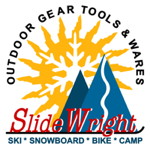@tomahawkins  has made it too easy with all the info to mount my own bindings, so I am going to give it a go for 2 incoming sets of flat skis. I'm a life-long tinkerer, with a well-equipped workshop at home ( golf & ski ), a drill press on hand, etc.
has made it too easy with all the info to mount my own bindings, so I am going to give it a go for 2 incoming sets of flat skis. I'm a life-long tinkerer, with a well-equipped workshop at home ( golf & ski ), a drill press on hand, etc.
I'm adding to my cart at Tognar and am curious as to why we have 4.1 x 9mm and 9.5mm drill bits ? Surely I don't need to buy both -> should I err on long or short ? Nothing like fretting over 0.5mm
 has made it too easy with all the info to mount my own bindings, so I am going to give it a go for 2 incoming sets of flat skis. I'm a life-long tinkerer, with a well-equipped workshop at home ( golf & ski ), a drill press on hand, etc.
has made it too easy with all the info to mount my own bindings, so I am going to give it a go for 2 incoming sets of flat skis. I'm a life-long tinkerer, with a well-equipped workshop at home ( golf & ski ), a drill press on hand, etc.I'm adding to my cart at Tognar and am curious as to why we have 4.1 x 9mm and 9.5mm drill bits ? Surely I don't need to buy both -> should I err on long or short ? Nothing like fretting over 0.5mm


